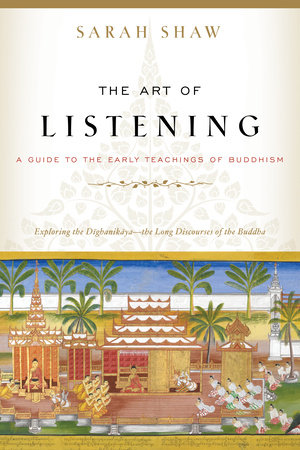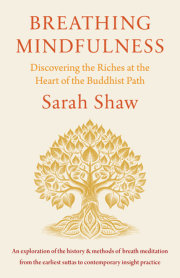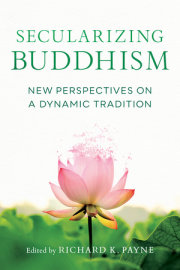The Dīghanikāya or Long Discourses of the Buddha is one of the four major collections of teachings from the early period of Buddhism. Its thirty-four suttas (in Sanskrit, sutras) demonstrate remarkable breadth in both content and style, forming a comprehensive collection. The Art of Listening gives an introduction to the Dīghanikāya and demonstrates the historical, cultural, and spiritual insights that emerge when we view the Buddhist suttas as oral literature.
Each sutta of the Dīghanikāya is a paced, rhythmic composition that evolved and passed intergenerationally through chanting. For hundreds of years, these timeless teachings were never written down. Examining twelve suttas of the Dīghanikāya, scholar Sarah Shaw combines a literary approach and a personal one, based on her experiences carefully studying, hearing, and chanting the texts. At once sophisticated and companionable, The Art of Listening will introduce you to the diversity and beauty of the early Buddhist suttas.
“In this quietly revolutionary book, Sarah Shaw shows us that Buddhist sutras are also Buddhist practices, and that listening can be a form of meditation. She shows that our modern habits of skim reading and skipping ahead in texts are very different from the way the sutras have been appreciated in the past, and that if we can better understand the way the dharma has been recited and listened to over so many generations, it will allow us to engage with it more fully. Cultivating a quiet and attentive practice of listening seems more necessary than ever and this is a book that shows us how it can be done.”—Sam van Schaik, author of Buddhist Magic and Tibetan Zen
About
The Dīghanikāya or Long Discourses of the Buddha is one of the four major collections of teachings from the early period of Buddhism. Its thirty-four suttas (in Sanskrit, sutras) demonstrate remarkable breadth in both content and style, forming a comprehensive collection. The Art of Listening gives an introduction to the Dīghanikāya and demonstrates the historical, cultural, and spiritual insights that emerge when we view the Buddhist suttas as oral literature.
Each sutta of the Dīghanikāya is a paced, rhythmic composition that evolved and passed intergenerationally through chanting. For hundreds of years, these timeless teachings were never written down. Examining twelve suttas of the Dīghanikāya, scholar Sarah Shaw combines a literary approach and a personal one, based on her experiences carefully studying, hearing, and chanting the texts. At once sophisticated and companionable, The Art of Listening will introduce you to the diversity and beauty of the early Buddhist suttas.
Praise
“In this quietly revolutionary book, Sarah Shaw shows us that Buddhist sutras are also Buddhist practices, and that listening can be a form of meditation. She shows that our modern habits of skim reading and skipping ahead in texts are very different from the way the sutras have been appreciated in the past, and that if we can better understand the way the dharma has been recited and listened to over so many generations, it will allow us to engage with it more fully. Cultivating a quiet and attentive practice of listening seems more necessary than ever and this is a book that shows us how it can be done.”—Sam van Schaik, author of Buddhist Magic and Tibetan Zen
Author
Notifications









